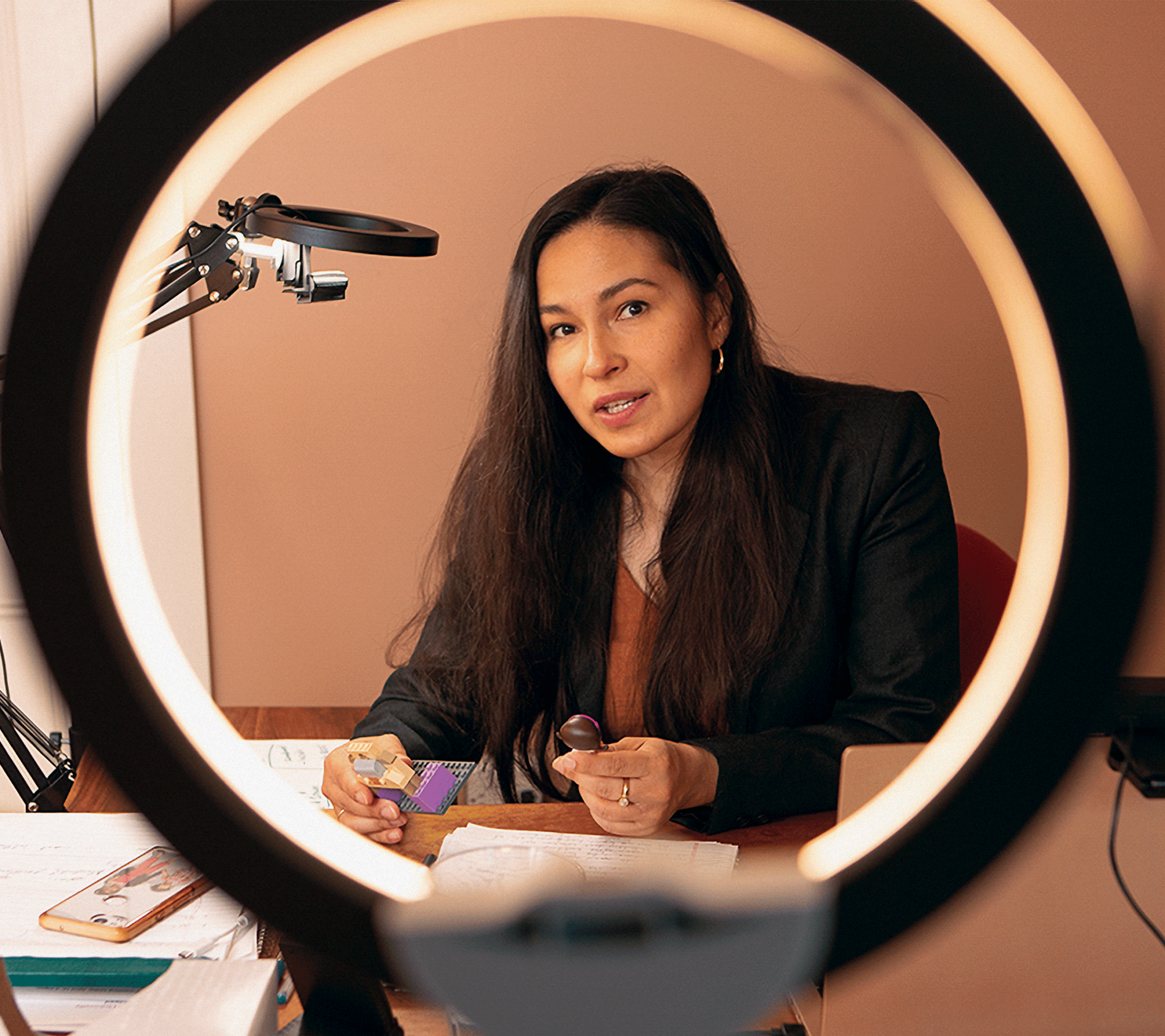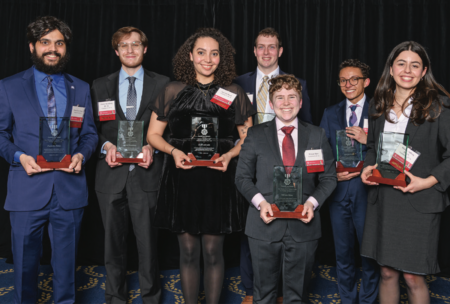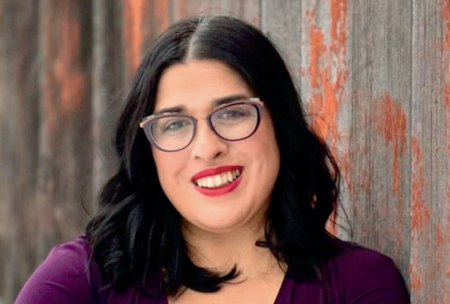by Ian McGullam
The COVID-19 pandemic overtook Cornell Law School in earnest in March 2020. Over the past year, students and professors have had to adapt to radical changes in what getting, and giving, a legal education means—first with the overnight transition to online-only classes, and then, as students were able to return to campus in the fall, in figuring out how to integrate online and in-person students into a cohesive whole.
As the anniversary of that first abrupt shift rolled around, the Cornell Law Forum spoke to faculty, students and staff about how the Pandemic Year That Was reshaped the experience of teaching law, and of learning it.
It’s a story of adapting to new technologies and new teaching modalities, but also of how old standbys persist. Although generations of law students have dreaded cold calls, numerous current students said the Socratic method has helped them stay focused through hours of Zoom calls.
Sandile Magagula ’22 said professors returning to cold calling has given things a welcome sense of normality. “Last March, when we went online, there was the understanding that, you know, this was new for everyone, so there was a lot more leeway given,” Magagula said. “But I think just adding that structure back has definitely made things feel more real. You’re still under the same pressure you were under in person.”
Some professors have found that they’ve had to modify how they use cold calls to account for the new circumstances. In the Torts class Tyler Rhoads ’23 took last fall, he said that Professor Valerie Hans, wouldn’t just question one student for an extended amount of time, but would bring in another a few questions later, and then ask another student to comment after that. “You were constantly required to be actively listening and engaged in forming opinions, rather than just like, ‘Oh, two people are going to get called on today,’” Rhoads said.
The same semester, Nelson Tebbe, the Jane M.G. Foster Professor of Law, started out cold-calling at random, but, based on midsemester feedback, switched to assigning panels of students who would be on the hook for each class. Students logging on from shared homes said they liked knowing when they might be called on so they could coordinate quiet times with roommates.
Lexi Anderson ’22 said that another helpful change was that professors now expect students to keep their cameras on, as opposed to the first semester of virtual learning, when classrooms full of black screens made it too easy to tune out. “The requirement to have the screens on just makes it feel so much more interactive and like I’m actually attending class,” she said.


Cornell Law School had already begun planning for a shift online as the COVID-19’s scope became evident, but Cornell University’s announcement on March 13 that classes would be suspended was still stunning.
Nonetheless, the Law School faculty and staff swung into action over a period of ten days to convert classes to virtual.

The Law School AV department drilled faculty on Zoom basics, distributing its stockpile of webcams, lights, and microphones to equip professors’ home offices. Odette Lienau, the associate dean for faculty research and intellectual life and professor of law, shared with colleagues her personal class policies for students attending virtual classes—use “raise hand” rather than asking questions in chat, keep your video on—and they were quickly adopted and adapted, first by other Law School professors and then in other parts of the university. The Law Library took advantage of publishers relaxing copyright restrictions to digitize as much class material as possible.
Breakout rooms have proved a popular device to encourage conversations, but experience has shown that they need to be approached carefully, with groups given concrete goals. It’s normal.
Hans, the Charles F. Rechlin Professor of Law, remembers relying on the generosity of the wider law faculty community in those early days, as professors with virtual-classroom experience quickly put together pop-up workshops on best practices. In one, the leader split the larger class into breakout rooms. “I got a sense of what it was like to be a student in a classroom when you’re being lectured at, and all of a sudden you transition into a breakout room with a small number of other people. And it was fantastic. I went from being in a larger group where there was very little opportunity to contribute or ask questions, to interacting in a smaller group,” Hans said. Breakout rooms have proved a popular device to encourage conversations, but experience has shown that they need to be approached carefully, with groups given concrete goals. If there’s no structure, discussion can bog down aimlessly, or a few voices can dominate. Tebbe designates students at random to report back on their groups’ conclusions, while Adjunct Professor Marion Bachrach ’77 has experimented with varying breakout rooms’ sizes—it turns out her students preferred the robust discussion that came from rooms with just three or four participants. Francisco Micheo ’21 has appreciated professors who drop into breakout rooms; in a 160-student class where that wasn’t feasible, Hans and her co-instructor Jeffrey Rachlinski, the Henry Allen Mark Professor of Law, enlisted law student teaching assistants to organize the breakout room discussions and ensure all of the students had a chance to contribute.


Teaching grew even more complex as it became clear that a return to campus in the fall was possible, with students signing a Behavioral Compact that mandated social-distancing, masks, and frequent testing.
Some classes remained totally online. In others, some students attended class in person, with others who either had elected to stay virtual-only participating via Zoom. A third “hybrid” model saw students who elected in-person learning rotate between being in the classroom some days, and “Zooming” in others. Experiential classes like clinics and smaller lecture classes that could still function with social distancing got priority for in-person classrooms. However, above all, the Law School wanted to give 1Ls the opportunity to take classes in person.
“The first-year experience in the classroom is really central to the whole law school experience, and it just lays the foundation for everything that comes after,” said Professor Eduardo M. Peñalver, who served as the Allan R. Tessler Dean until the beginning of 2021 when he stepped down in preparation for taking a new post as Seattle University’s president in July. “Part of law school is the kind of terror in the first-year classroom of being called on, and having to compose yourself and generate a response. It really does develop a confidence in your ability to think on your feet.”
The first-year experience in the classroom is really central to the whole law school experience, and it just lays the foundation for everything that comes after.
– Professor Eduardo M. Peñalver
Of course, the new reality meant that a lot of iconic 1L experiences have been altered. The Law School has tried its best to come up with ways to give 1Ls an engaging introduction to their time at Cornell, from leaving the tents up on campus to give students a place to gather to hosting orientation events on Zoom. Some ended up working better than others—it’s a lot easier to connect with a new classmate you’re sitting next to during an in-person panel discussion than in a Zoom lecture, Leah Toney ’23 said. Still, she added, “We as 1Ls came in pretty eager to learn and to participate, and just kind of get the most out of what we could.”

“So many people have said, ‘Oh, we’re so sorry this is your experience, that you’re missing out on these things,’” said Rhoads.
“But for us, we haven’t ever experienced 1L or law school before. And so it’s really not all that shocking to us, because we didn’t really know what we were going to experience coming into it. It’s hard to know what you’re missing if you don’t have an experience of the alternative.”


A decade ago, in the aftermath of the much smaller disruption caused by the swine flu pandemic, the Law School had already started to install cameras and microphones to allow remote access to classes.
However, more than $100,000 in tech upgrades have been necessary over the past year to bring all of the classrooms up to modern standards and enable the variety of new teaching models necessitated by the pandemic. The Law School’s AV team, Michael d’Estries and Ryan Schmohe, installed banks of beam array microphones in classroom ceilings, first hacking together systems using consumer-grade equipment in the fall and then putting in more sophisticated gear as supplies became available. “They can actually pinpoint where a student is talking in the room and all focus on that student,” d’Estries said. “And it also triggers a camera at the same time. So, if you’re in the audience, and you start to speak up, the camera shifts from the instructor, and it follows you intelligently.”
The result is that a discussion can play out between a professor and students in a physical classroom and others online, with mics picking up individuals on-site and speakers transmitting what virtual students are saying to the classroom.
Professor Heise teaching an Education Law class in the spring 2021 semester
“This is an important thing that a lot of people will remember from their time at Cornell: a professor very deliberately and carefully sets in motion a particular conversation, which then develops between the students, and then the professor sits back and makes discrete interventions at the right moment,” said Jens Ohlin, interim dean and professor of law. “If you’re only picking up the audio at the podium at the front of the class, you’re not getting the full effect of the pedagogy.”
Even after a year of upgrades, though, there’s still room for improvement, and rustling papers and tapping keyboards next to mics can result in frustration. “There are definitely times when online students can’t hear other students speaking when they’re getting cold called because microphones don’t work or the cameras don’t work, so you don’t know who’s talking when,” said Toney.


Faculty and students at the Law School haven’t been spared the pandemic’s great blurring of boundaries between professional and home life. They log into virtual classrooms from spaces shared with family members and roommates, and juggle their educational responsibilities with those of parents and caregivers.
“Every once in a while, there will be an acute need for parenting that comes from outside the door,” said Tebbe, who splits the day between his roles as law professor and dad. “You just have to hope that students are understanding about that, and then also remember that when the same thing happens with students.”
Lienau had to figure out how to adapt her classroom style to teaching from her guest room. Pre-pandemic, she had been a big proponent of traditional blackboards to help students keep track of where the money was going as she taught subjects like international economic law and bankruptcy law. “It’s all about flows of money,” she said. “And so I like to draw the flows.” In the beginning, Lienau tried out various replacements, including a little easel-mounted blackboard and corporate-brainstorming-session–style pads of paper, but visibility over Zoom remained subpar. Finally, in the fall, she figured out how to use a document camera to let students watch her clearly as she drew.
Teaching from home also offered some unexpected props, in the form of her kids’ toys. “Doc McStuffins played the third-party financier contemplating a transaction, and then the target asset was a little Lego building,” Lienau said.
Micheo has been attending virtual classes from his family’s home outside of San Juan for his final semester and enjoying the distinctly un-Ithaca-like weather, but Puerto Rico’s lackluster internet connectivity can make following along a challenge at times. “I’m getting half of what people are saying,” Micheo says. “And then sometimes you’ll be in a Zoom class and you’ll get called on, and the neighbor’s gardener will be going off, or there’s a loud car in the street.”
There are advantages to virtual learning. Nathalie Greenfield ’21 found she preferred her more expansive home setup, with dual monitors and space for books and unlimited tea. “You can look a case up online if someone’s talking about a particular issue in class that you’re like, ‘I have no idea what we’re talking about right now,’” Greenfield said.
Some students have expressed frustrations that their pandemic stress load has been compounded by professors who feel like they need to assign more work than usual to compensate for not being physically in class. “What helps is [when professors acknowledge] the challenge that we have in front of us instead of, you know, pretending that it’s normal,” said Toney. “I think that helps to orient ourselves so that we know we’re all in this together instead of ‘okay, let’s just chug along.’”
And, of course, the pandemic and law school finals haven’t been the only sources of anguish over the past year. The racial-justice reckonings triggered by the killings of George Floyd, Ahmaud Arbery, Breonna Taylor and other Black men and women would have been difficult enough in a normal year.
But, add a pandemic and everything became ten times more difficult.
What helps is [when professors acknowledge] the challenge that we have in front of us instead of, you know, pretending that it’s normal.
“Everybody was fatigued. There was pandemic fatigue and there was the fatigue of having to speak up to affirm your own
humanity,” said Dean of Students Markeisha Miner. “For people coming into their professional identity, they have to figure out, what does this mean for me? In my everyday life, my life can literally be choked out of me, and I’m learning to uphold the rule of law in a system where the rule of law may fall short.”
Magagula had just been elected as the treasurer of the Cornell Black Law Students Association that spring when BLSA was forced to launch into action, releasing statements and organizing virtual events where members could support one another and vent their frustrations. “On top of all your law school stuff, you’re also having to carry that,” he said. “It can definitely be a mess of responsibility.”
Whatever the cause of hardship, Miner’s office offers itself as a resource that can point students towards support and accommodations. Miner recalled a student who reached out after they had tested positive for COVID-19 and was having difficulty attending their remote classes. “I sent a message to those professors, without disclosing their confidential information, that just says the student is dealing with a difficult situation, and any flexibility you can extend to them I would appreciate,” Miner said. “Because we’re such a close knit and small community, our faculty understands that they don’t need to know the details.”


Ultimately, much of the pandemic’s strain stems from being forced to reengineer human connections that used to happen naturally.
Professors have gone entire semesters without ever meeting their students in person. When they do see each other, it’s just from the nose up. Rhoads recalled taking Civil Procedure his first semester with Professor Barbara Holden-Smith. “She’s one of the sweetest people I’ve met, but whenever she’s teaching, it can be quite intimidating,” he said. “With masks on, it’s hard to tell what people’s faces are doing. And so I remember the first day she told a joke, and no one laughed, because everyone was scared of her. And then she was like, ‘You can’t see it, but I’m smiling under my mask. That’s a joke, guys.’”
Professors have gone entire semesters without ever meeting their students in person. When they do see each other, it’s just from the nose up. Rhoads recalled taking Civil Procedure his first semester with Professor Barbara Holden-Smith. “She’s one of the sweetest people I’ve met, but whenever she’s teaching, it can be quite intimidating,” he said. “With masks on, it’s hard to tell what people’s faces are doing. And so I remember the first day she told a joke, and no one laughed, because everyone was scared of her. And then she was like, ‘You can’t see it, but I’m smiling under my mask. That’s a joke, guys.’”
The Business Organizations class taught by Dan Awrey, professor of law, is listed as in person, but two-thirds of the class tunes in online, including about twenty-five who attend asynchronously because they’re living in Asia. Besides the class proper, Awrey has started holding two seminars where students can discuss the week’s material and ask questions—one starting at 7:30 a.m. on Fridays so that the asynchronous students can attend, and another for the real-time students. “Because students are so isolated, and because they don’t have that many opportunities for interaction, for a class that big I just thought that this was a way to at least show willingness,” Awrey said.
Teaching in a vacuum is not a very effective way of dealing with people who have a lot on their minds.
Getting ready for her Ethical Issues in Criminal Investigation, Prosecution, and Policy seminar in the fall, Bachrach was searching for ways to bridge the virtual-classroom divide, and she also knew that she couldn’t just stick to business as usual if her students weren’t living through multiple compounding crises. One way she approached the dilemma was by offering the opportunity to write a—totally optional—paper sharing a time when they had dealt with “the other” or an oppositional force. Despite all the other work they had, more than half the class felt moved to share their experiences. It provided an on-ramp for class discussions about people and institutions that transgress the rules, but it also gave her an unusually intimate view into her students’ lives.
“Teaching in a vacuum is not a very effective way of dealing with people who have a lot on their minds,” Bachrach said.












